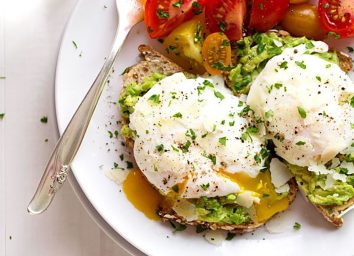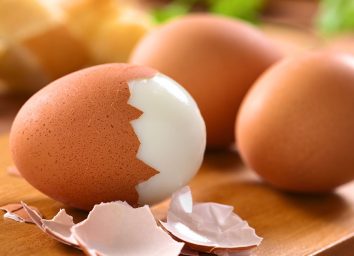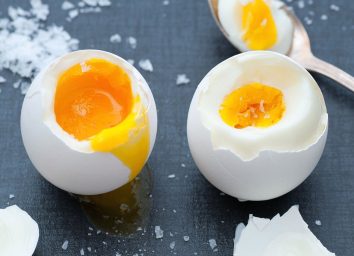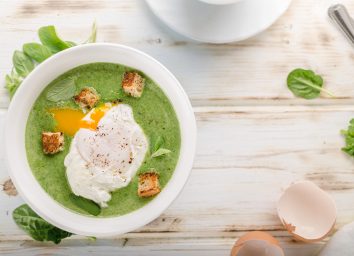How to Cook the Perfect Eggs for Every Cooking Method
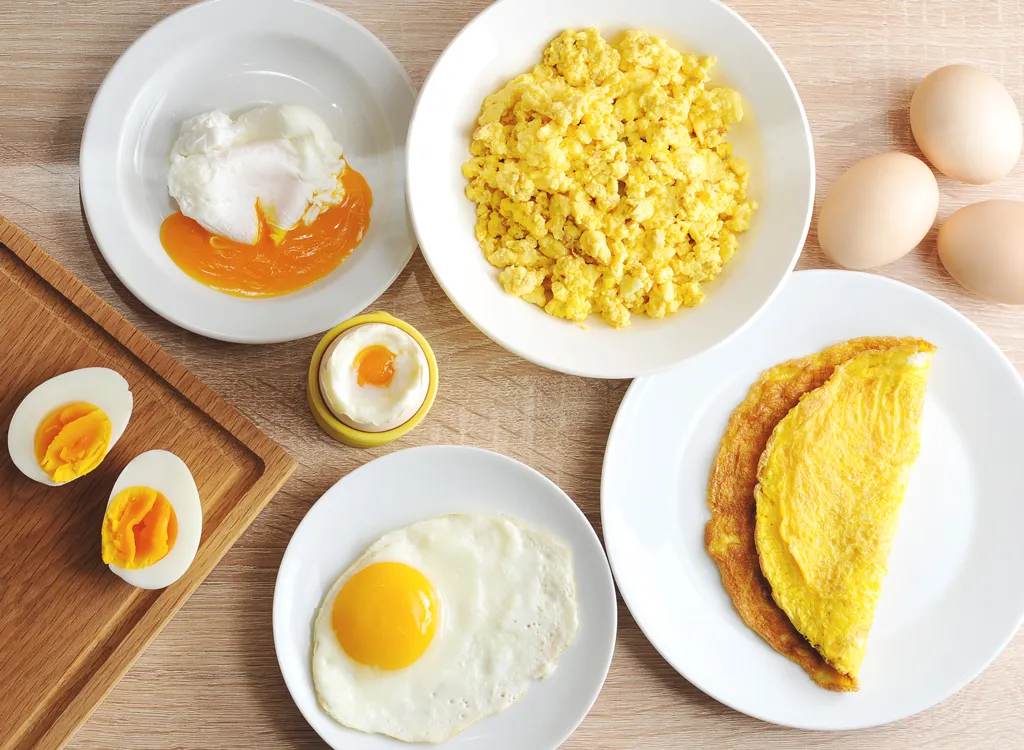
Eggs are the ultimate breakfast staple that offers the right mix of healthy nutrients so you start your day feeling satisfied. It may seem easy to whip up a delicious batch of hardboiled eggs, but when it comes to how to cook eggs properly, you can easily screw them up. And that’s ok—we’re not all experts in the kitchen.
Luckily, though, some people are. And we asked these experts to offer up their tried-and-true tricks for how to cook eggs by scrambling, frying, poaching, boiling, and putting them in an omelet. Avoid a morning meal gone in the garbage—or just make your current egg situation a little more delicious—by channel these expert-backed tips in your kitchen when you’re ready for an even better breakfast. And if you love cooking, sign up for our newsletter to get daily recipes and food news in your inbox!
How to make scrambled eggs
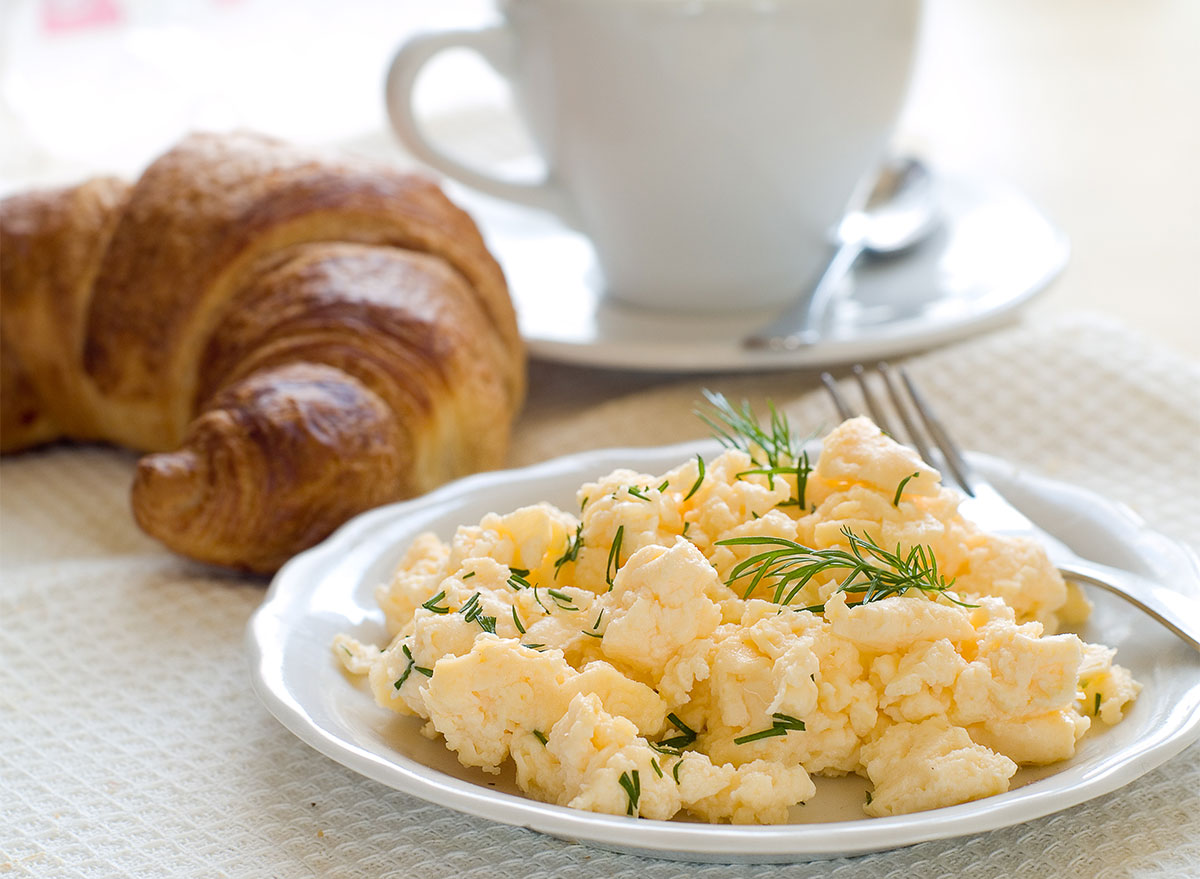
A simple way to get your egg whites and yolks in one bite (plus any veggies, herbs, or protein you want), scrambled eggs are a delicious and easy way to make your morning meal. The trick to mastering the method is all about learning to create the right texture without burning them.
Turn the heat down
Almost every expert you talk to will tell you to keep the heat low when scrambling eggs or putting them in omelet form. “The secret to the perfect scrambled eggs is a slow cook on low heat,” says Kara Lydon, RD, blogger at The Foodie Dietitian. She adds a splash of milk to raw eggs, whisks until combined, then pours the mix into a butter-clad, non-stick pan.
Stir consistently
“Constant stirring over medium heat will break up the curds as they form and make a texture that will almost feel like you melted cheese into them,” says Michael A. Young, executive chef and director of food and beverage at the Sheraton Kauai Resort in Hawaii. Sounds delicious, right? The catch is, if you cook a little too long, the water escapes, and as he puts it, “you have sad, crumbly eggs.”
Add goat cheese
For a super creamy scrambled egg, add a bit of goat cheese while they’re still cooking and you’re still stirring, says Neda Varbanova of Healthy with Nedi, a certified culinary nutritionist, holistic health coach, and recipe creator. “They come out incredible as if you are eating scrambled eggs at the Four Season in Paris,” she says. Can’t beat that!
How to make fried eggs
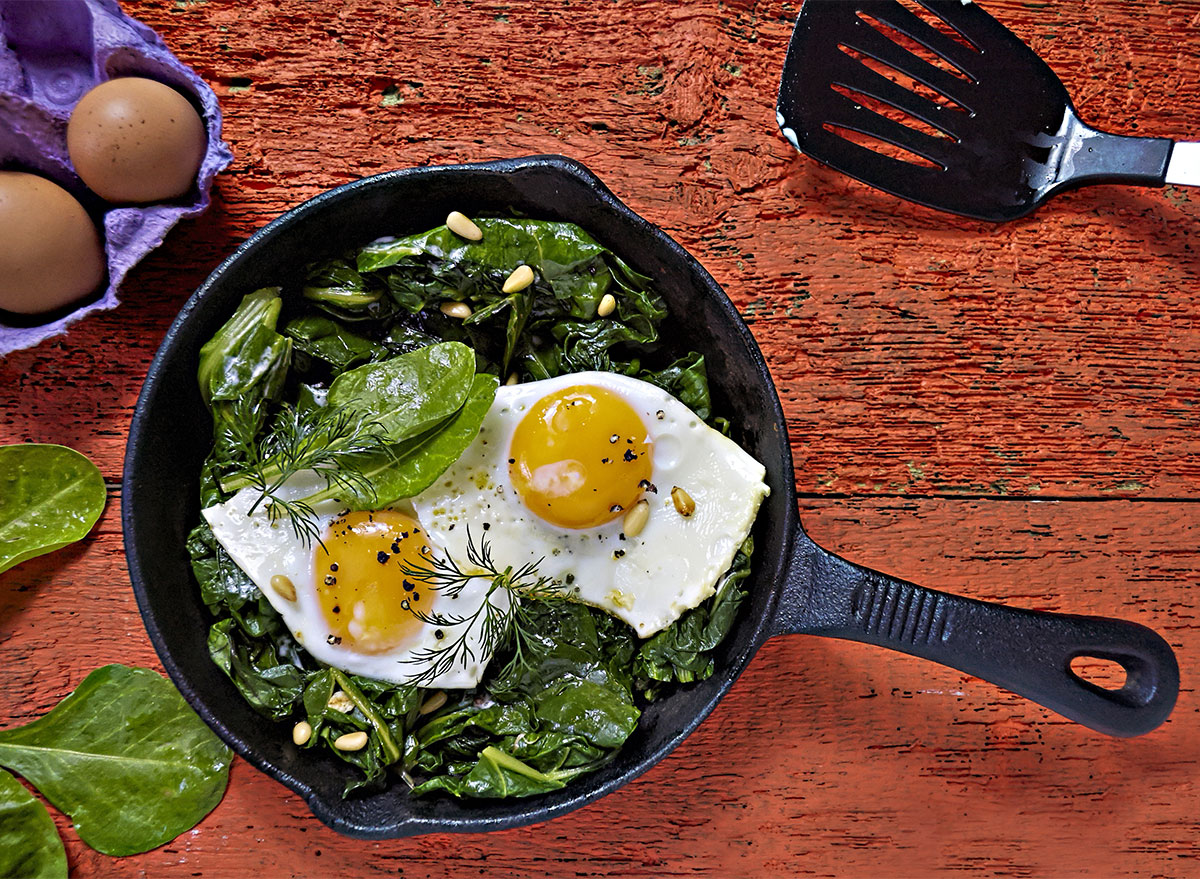
Fried eggs make the ideal topping for a bowl of quinoa or a burger. You just want to find the right cook time between just right and overdone. For those runny yolk-loving people, keep the cooking time shorter.
Stick with nonstick
As you should with almost all egg dishes, always use a nonstick pan, says Elana Karp, head chef for Plated, a meal kit delivery company. Warm it up to medium heat and when it gets hot, add a tablespoon of olive oil or butter, letting it melt for one minute. Crack the egg directly into the pan, let it sizzle, then season it with salt and pepper. Next, keep it cooking for two to three minutes.
Let ’em fry
For those coveted lacy edges, Karp says to crank up the heat after that initial two- to three-minute cook time and let it fry for another minute or two. If you want a smoother edge, cover the pan so the egg cooks longer, but doesn’t crisp up (keep the heat lower). If you think they’re done, give the pan a jiggle. If the raw whites move, then keep them on there for just a little longer.
Go for over easy
Keep an eye on your eggs to check that the whites set, but don’t become opaque, says Karp. Once you see that they’re set, use a flexible spatula and carefully flip the egg and cook for another 10 to 15 seconds. This will give you that gooey yolk inside—perfect for dipping with a little bread.
Consider straining your whites
“Most home cooks don’t realize it, but eggs have two different textured whites,” says Chef Justine Kelly, co-founder and CEO of Sun Basket, a meal kit company. “The thinner white will spread, so if you want a neat egg that stands up firm, strain off the thin whites with a slotted spoon or a small strainer and transfer the eggs to small bowls until you’re ready to fry.”
Use the oven
Ricardo Barreras, chef and owner of Pilar Cuban Eatery in Brooklyn, says his method for making sunny side up is pretty flawless. “In a small Teflon pan, heat up olive oil until the pan is medium hot, crack two eggs, and cook for roughly 30 to 40 seconds,” he says. “Then place on the top rack of a 400-degree oven for about 4 minutes until all the raw egg white on top is cooked and take out immediately. Do not keep in the pan or cook any longer as the yolks will begin to cook.”
How to make poached eggs
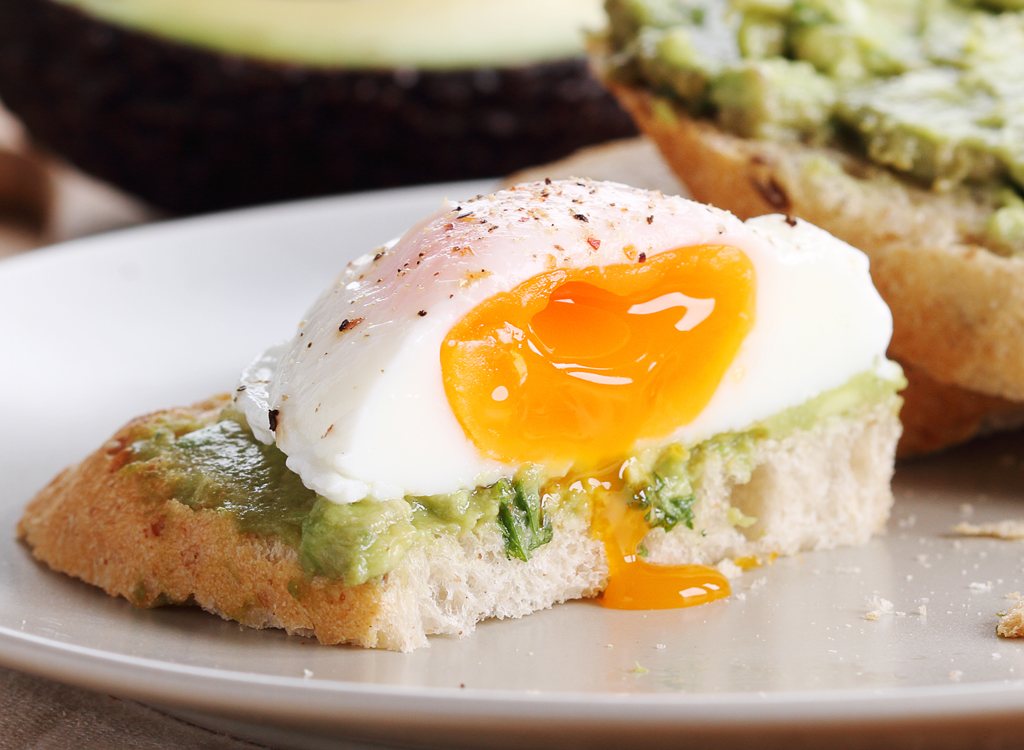
Poaching is probably the most difficult way to make eggs, but this method is just as delicious (and healthy). Poached eggs are great in breakfast bowls or served Benedict-style. You just might need a few tries to get the egg to cook, without breaking it.
Watch the water level
“When poaching eggs, people often don’t put the right amount of water in the pan,” says Chef Young. “Too much water and the egg can crash to the bottom and break the yolk; too little and it may stick to the bottom.” Aim for about three inches of water at a heavy simmer, that’s the sweet spot.
Stir the water
After bringing water and a half-teaspoon of vinegar to a boil, stir the water so you have movement. Then, break the egg into the water and reduce the heat until it’s barely bubbling, suggests Jessica Crandall, RD, certified diabetes educator, spokesperson for the Academy of Nutrition and Dietetics, and founder of VitalRD.com. Then cook for three to five minutes.
Keep a steady simmer
“The key to poached eggs is not having the water boiling, but rather at a simmer,” says Renata Trebing, blogger at Nourish with Renata.
Add a splash of vinegar
Hate those whispy whites? Trebing recommends that you add a teaspoon of white vinegar or lemon juice in the pan so the egg whites congeal.
Cover up
Once you get the eggs in swirling, simmering water, turn off the heat and make sure you cover the eggs for three minutes. “You will have the most perfectly poached eggs,” says Varbanova. Then, use a slotted spoon to take the eggs out of the water and dab the extra liquid with a paper towel.
How to make hardboiled eggs
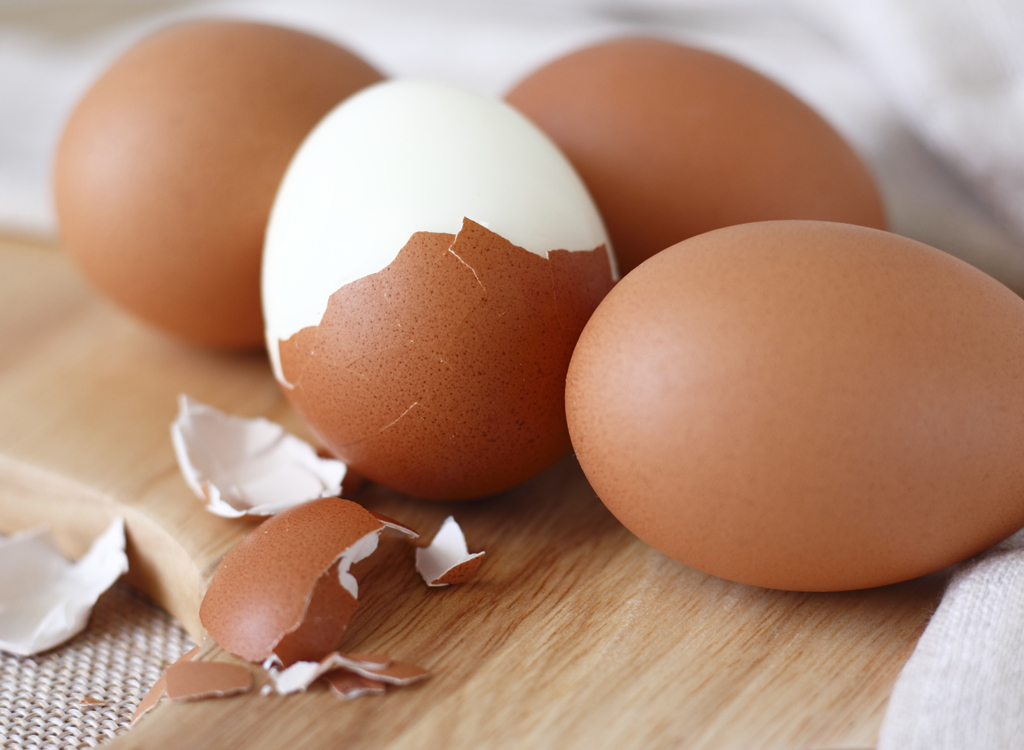
This is the easiest way to take eggs on the go! Boiling eggs, whether you like them soft or hard, is a perfect way to get some protein throughout the day. You just need to master the timing to get a tasty texture.
Put eggs on ice
Chef Young starts his hardboiled eggs in cold water, brings them to a boil, then starts the cook timer for nine minutes. Once the timer goes off, “then they go straight into the ice bath for 10 minutes,” he says. “Skip the ice bath and the eggs will carry over,” meaning they’ll be overcooked. You know you overcooked them if the yolks have a green tint.
Take the pot off the heat and cover them up
After the water is boiling with your eggs inside, make sure to cover up the pot, says Karp. You want to make sure to remove it from the heat, too, so you don’t overdo the cooking.
Wait to peel
By adding a little vinegar to the water when you boil eggs, it’ll make them easy to peel. But you also want to wait a bit before you remove that shell.
Opt for older eggs
“No matter what method [of peeling] you choose, older eggs will peel more easily,” says Clare Langan, culinary producer for Scraps. That’s because eggs are porous, which allows air to move into them. Older eggs allow more air in, resulting in a large air pocket, and more space between the whites and the shell.
Time it right
Crandall found the perfect formula for getting hardboiled eggs to your desired texture in the Instant Pot: For eight eggs in one cup of water, cook for two minutes for a runny yolk, three for partially (or soft) boiled, and five minutes for hardboiled.
How to make eggs into an omelet
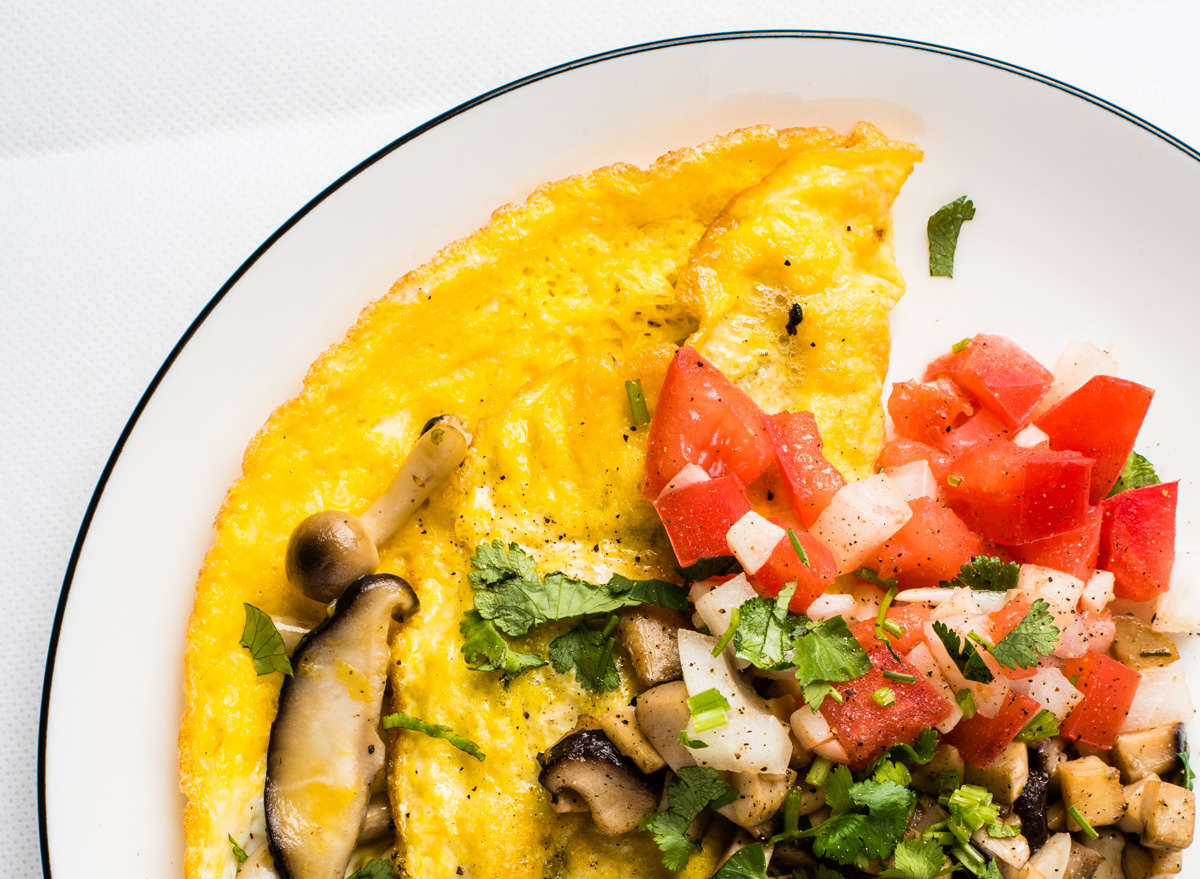
Another method worthy of adding veggies, protein, herbs, and spices, this is one way you can get super creative. It’s not always easy to maintain the omelet’s shape, but these tips will help.
Grab a separate bowl
Chef Young says one of the biggest mistakes people make when cooking up eggs is cracking them right in the pan, instead of in a separate bowl. “That’s a great way to eat some crunchy shell. Crack them into a bowl first instead,” he says. “You can fish out the shell and you aren’t fully committed if you break the yolk.” So before you whip up that omelet, make sure to mix the eggs separately.
Keep temps low
Like scrambled eggs, you don’t want to cook your omelet at a high temperature, either, says Tanner Agar, owner and chief experience officer at Rye Restaurant in Texas. “If you can hear them, they are overcooking,” he says.
Salt at the end
Agar shares one more tip: “Also, don’t salt eggs too early; it tears at the texture. Salt them right at the end.”
Cook mix-ins
Before you even add your eggs, cook your veggies and meat in olive oil for a few minutes over medium heat, says food blogger Autumn Boyle, founder of Lectin Free Mama. Whisk eggs with a tablespoon of liquid per egg then spread the meat and veggies in an even layer across the pan and turn the heat down to medium-low. Next, pour the eggs over the mix-ins and pick up the pan and swirl it around so the egg covers the entire bottom—it might come up about a centimeter on the sides of the pan. “Now, instead of risking an omelet that falls apart when flipped, cook it over low to medium-low heat with a lid on,” Boyle says. “The enclosed low heat will cook the omelet on both sides evenly. Simply sprinkle some cheese on, fold it in half, and slide it out onto a plate.” Done and done.
Make it French
“There are a few key components to making the perfect French omelet, and the first is a clean non-stick pan,” says Ian Davis, executive chef at Band of Bohemia. “It is also important to properly emulsify the eggs—this is what will give you really fluffy, light, restaurant-quality eggs.” To make your omelet French, make smaller folds, “almost like you’re rolling eggs,” Davis says. “You have to be patient because if you work too quickly, you won’t let the proteins in the eggs set and cook.”
